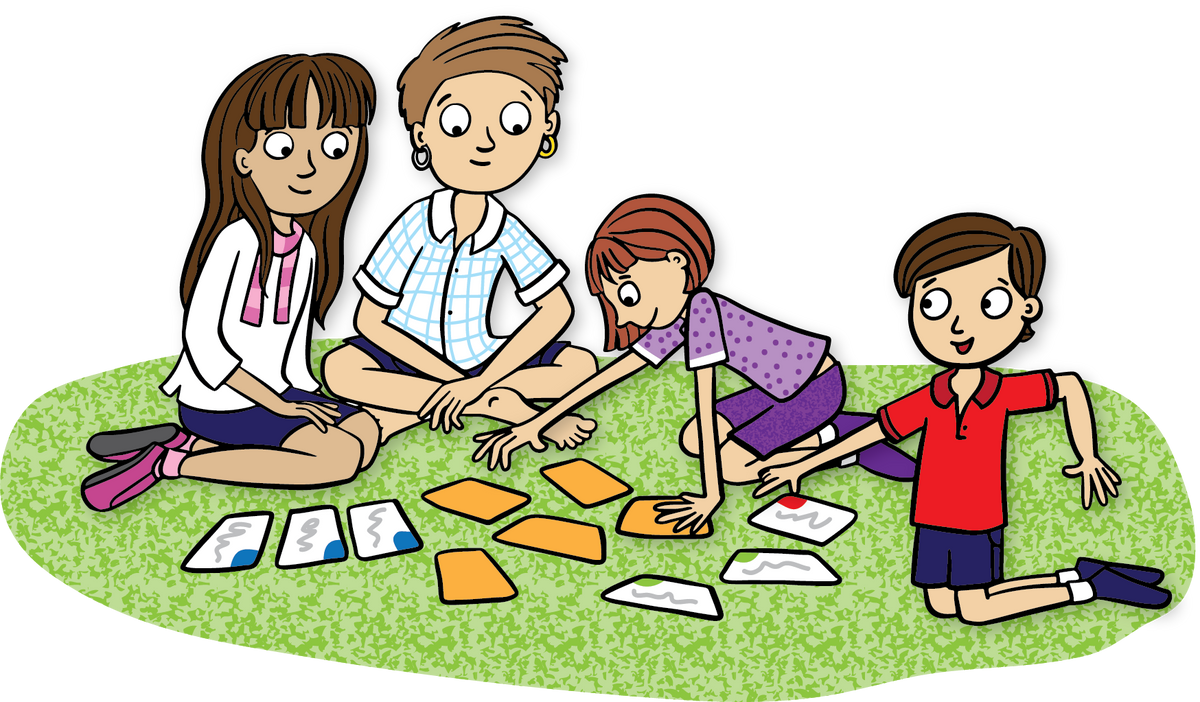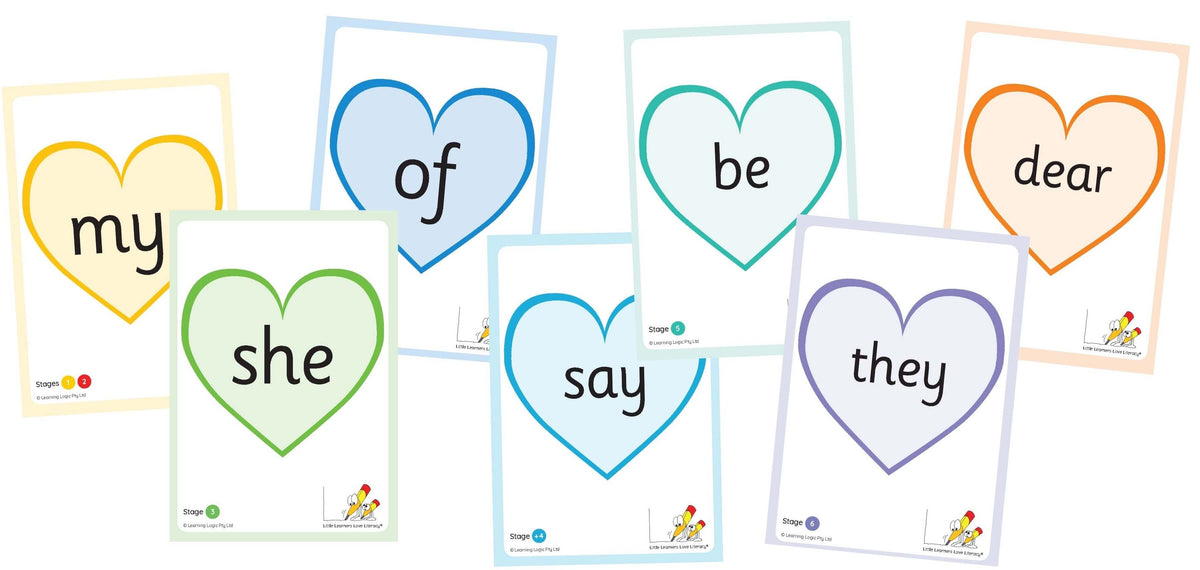Small Group Reading Activities & Tips
Regular small group reading sessions are an essential part of the Little Learners Love Literacy® weekly plans, following our explicit teaching approach of revise - teach - practise - apply - assess. Using decodable books such as Pip and Tim, The Wiz Kids and Little Learners, Big World Nonfiction in small group sessions allows children to apply their phonics knowledge, whilst you guide them towards mastery and independence.
On this page you will find information and tips to help you get started with small group reading in the classroom. Please contact the Little Learners team if you need any further support with your decodable books, or register for a free webinar.
Planning small group reading
The Little Learners decodable books include notes and question prompts at the back of the book to support teachers and minimise time spent on planning and preparation. But there are some things you should do prior to your sessions in order to make the most of it …
- Plan your groups of children based on instructional need and then select the right book for your group’s needs. Groupings should not stay the same all year - they should be fluid and change based on student needs. All Little Learners decodable books fit into the Seven Stages sequence and have notes in the back which summarise the teaching focus, making it simple to find the right book for your group.
- Read the book yourself before you run an SGR session. Taking time to do this will make a huge difference – if you are familiar with the content, you can better prepare children before they start to read. For example, do they have any vocabulary or content knowledge gaps which might stop them from comprehending, or are there any tricky words you might want to pre-teach before you begin?
- Plan your timetable - plan an SGR session into your daily schedule, at the same time every day of the week. You'll need to give your group your full attention, so plan ahead to minimise interruptions by making sure the rest of your class are be occupied with meaningful independent and/or partner work (see below). How long should a session last? Depending on the age group – 10-20 mins. Extend to 30mins at the higher stages.
- Organise your resources so they are ready to grab and go.


What resources do you need?
Multiple copies of the decodable text - 1 copy for each child and one for the teacher.
Optional:
• Speed Sounds and Chants Mini Set
• Printed Heart Words flashcards
• Mini whiteboard, pen and eraser for teacher
• Character cards for fiction (fiction)
• Small group reading notes (nonfiction)
• Speed words sheet (nonfiction)
Find some of these resources in the Free Downloads section of our website.
- Plan activities for the rest of the class - what will the other children do while the teacher runs a small group reading session? This will depend on the age of the children and on the week of teaching within the LLLL scope and sequence. There are plenty of options within the LLLL resources (expand below for details).
While planning, consider:
- what is the purpose of the activity? Is it 'busy work'? Children should be practising and applying the phoneme-grapheme correspondences and skills that have recently been taught.
- how you would usually manage small group work within your class. What can you keep and what will you change about how you organise this?
- what resources are available to utilise? Think about resources within the LLLL program that you have. A teacher’s aid or parent helpers could assist also.



Sample small group reading notes
As part of the Little Learners BIG WORLD nonfiction series, we compiled a set of teacher notes for each book to support small group reading sessions. These notes suggest a structure for your session and include some activities and talking points. You can view a sample here:
Before reading routine
The ultimate goal for any small group reading session is for children to understand what they are reading and feel success. Don't be tempted to skip over 'Before reading' activities - preparing children for the words (phonics, Heart words, vocabulary) and concepts they are going to encounter will set them up for success. Every group (and every book) will be different, but below are some recommendations to get you started.
Phonics warm-up
Start with a phonics warm-up of Speed sounds and Heart words - children will need to apply this knowledge to read the book.


1. Speed sounds
Revise the previously taught Speed sounds with your group using the mini Speed Sounds and Chants cards or referring to the list in the back of the book. Children say the phoneme when you show the card (or point and say the sound if using the list in the back of the book).

2. Heart words
Revise the Heart words that appear in the book using the Heart Words Flashcards or referring to the list in the back of the book. Only new Heart words for the stage are listed from Stage Plus 4 onwards. Point to the word and say the word. Children cannot decode these words yet - they have learned them 'by heart'. Unsure about Heart words? Read more below.
Decoding warm-up
Refer to the Speed words in the back of the book (or print the Speed words pdf and cut into cards) to practise decoding some of the words used in this book. Select a few to read together. Encourage children to sound out and blend to read the words if they cannot read them automatically yet.


Additional teaching opportunities
While it is good to start reading the book as soon as possible, you might want/need to re-teach or pre-teach some phoneme-graphemes, punctuation, vocabulary or concepts (background knowledge). This is entirely dependent on the needs of your group. In some cases you can move straight from the warm-up to talking about the book.
Check the notes in the back of the decodable book - are there any opportunities for extension? Or will the group need extra support? For example Stage +4 nonfiction: "This book contains two other double letter digraphs that are less common: tt as in mitts and zz as in fuzz. Write these words on your whiteboard, and model decoding them (/m/i/t/s/, 4 sounds; /f/u/z/, 3 sounds). Children then practise decoding with you."
Character Cards - there are character cards available to accompany all the Pip and Tim and The Wiz Kids books. Introduce the characters and decode their names before reading the book. Free teacher notes are available for ideas and further support.

Talk about the book


Now it’s time to get excited about the book!
- Look at the front cover and ask the children to read the title out loud, tracking under each word as they read it from left to right. Check for vocabulary comprehension if necessary.
- Explore the cover image - what can you see? What do you think the book might be about? Why do you think that? A brief discussion allows children to describe the cover, making connections to existing content knowledge and experiences, and making predictions.
During reading
How do we read the book as a group?
- Ask children to read each double page spread aloud together in a choral fashion, tracking under each word as they read with their finger.
- ‘Tune in’ to individual children as they read and support them when they make a mistake or get stuck on a word (see below).
- Explore the pictures after reading to extend comprehension.
- Stop the group at the end of each double-page spread to check for understanding, including vocabulary.
Suggestions are supplied for Little Learners BIG WORLD nonfiction books in the Small Group Reading notes. Question should be specific. Make sure this is a quick stop and check so that you don't lose the momentum of reading the book. You'll want to make sure you finish the book and children achieve success during the session.

Supporting children when they get stuck
With Little Learners Love Literacy children have one very reliable strategy for reading unfamiliar words - decoding! All our decodable books follow our scope and sequence for teaching, ensuring children are never asked to read something that is too hard or they have been taught how to decode yet.
Support children if they are stuck, or if they read a word incorrectly, by:
• asking them to sound out the word and then blend the sounds together to say the word.
• using the mini Speed Sounds cards to remind them of a letter-sound correspondence by doing the chitter chatter chant.
• helping children to break up longer words into syllables, for example 'fantastic' can be broken into 3 syllables - fan-tas-tic. Decode each syllable, one at a time. Then say each syllable to read the whole word.
• Don’t give children the word unless it is a Heart word.
• After children have successful decoded the word, go back to the start of the sentence (or page) and read again.
View some examples of children reading decodable books and teachers keeping them on track:
Developing fluency
Fluent readers are first and foremost accurate decoders, they also demonstrate automatic recognition of mapped words allowing them read at a good pace. A fluent reader also reads with expression - using punctuation, grammar, vocabulary and text features as their cue. Fluency develops from effective word reading instruction, modelling and lots of practice. If your small group needs support with improving fluency, you might consider the following tips.
• Remind all children to track with their fingers under the words as they read from left to right. Skipping words is very common and results in children not fully comprehending the meaning of the text. Children losing their place and skipping a line of text is also very common.
• Re-read sentences or passages to improve fluency, including expression – model this first and children echo you.
• Take notice of punctuation - pauses, intonation, and volume can be indicated by an exclamation mark, comma, ellipsis, talking marks and so on.
• Take notice of typography - use of bold fonts, italics, colour, capital letters and speech bubbles for example may impact how a word or sentence should be read.
Key reading behaviours
- Track with finger – children should point underneath each word as they read it. Tracking along with the blending of words. When children are more experienced readers they will progress to track with their eyes only.
- Sound out and blend unfamiliar words
- Re-read sections to improve fluency and comprehension
- Use punctuation to improve fluency through expression/intonation.
After reading routine

CONGRATULATIONS! Celebrate success - children have finished a whole book!
Have a brief conversation about the book to check for understanding.
Questions to talk about
There are questions to talk about at the back of every LLLL decodable book. Pick enough of these questions to check that children have understood the book, and to spark a short conversation.
Vocabulary check
Use the vocabulary check in the back of the book, if you need to. It includes a child-friendly definition of any less-common vocabulary used in the book, and a question to check for understanding. Ask: Can you think of other similar words? Or can you use this word in a silly sentence of your own?


Little Learners BIG WORLD nonfiction books feature a Talk about it page to explore after reading. Read the text to children (it is not decodable – it is designed for oral comprehension and vocabulary development). Read the fun facts to children and discuss the ‘Be curious’ questions. Children could draw or write their answers later.
More activities
Useful links & resources































































